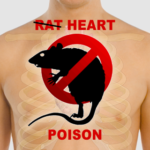By Ben Fuchs | Pharmacist Ben
Lupus is a non-tissue specific (it can show up in many parts of the body) autoimmune disease with broad based symptoms, the most common of which is a butterfly shaped pattern of redness that appears on the face. At one time physicians used to believe it was caused by a bite from a wolf (lupus is the Latin word for “wolf). Today doctors and other medical geniuses will tell you that there is no known cause, but I’m only a simple little pharmacist so I’m going to tell you that there is. Lupus is a disease of the immune system. It represents a characteristic immune system malfunction called autoimmunity, which simply means the body’s defensive chemistry turns on itself (auto = “self”). According to the Lupus Foundation website the symptoms of lupus “mysteriously” show up. They claim that they are “devoted to solving the mystery of lupus”. Oh really? Well, perhaps they should listen to The Bright Side where we talk about the real causes of lupus and other autoimmune diseases, which is quite obviously a jacked up and malfunctioning immune system. The only mystery is what exactly is it that is causing this hyperactive and misguided immune initiation.

Drawing of the typical “butterfly rash” found in lupus. By National Institute of Arthritis and Musculoskeletal and Skin Diseases
Ok, good question. What is it that causes a confused defensive response? That is, a defensive response that instead of focusing its wrath on an enemy instead turns its considerable biochemical firepower on the organism that it’s supposed to be defending. Well, in order to answer that question we have to understand where in the organism the immune system is located.
The vast majority of the immune system, anywhere from 70 to 80 percent, is located in a specialized tissue of the digestive tract. It’s technically called “Gastro Intestinal Lymphoid Tissue”, or GALT, and it’s responsible for initiating all immune responses to troublesome foods that pass through the digestive tube called the intestine. The most significant GALT response involves increasing the permeability of the digestive lining thereby allowing immune cells, which live in the blood, to have access to said troublesome food.
Unfortunately this permeability of the digestive lining is a two way street. In addition to allowing immune system cells to enter into the intestine from the blood, it unfortunately also permits food particles to enter into the blood from the intestine. Big problem!
Once food particles enter into the blood, a second defensive response is then initiated within the blood. And now we really have problems! The immune system is intelligent; it learns and “remembers”. Foods have a chemical constituency and the immune cells learn to respond to and can “remember” the specific chemical constituency of a food particle. Once the offending food structure is “remembered”, the immune system will become activated by ANY similar chemical structure. In other words, it will attack any substances with that same or a similar chemical constituency. Because chemical constituencies are consistent throughout nature and biology, there are many organs and systems in the body that “look” like foods that the immune system has learned to react to. The immune system will then react to those tissues too. If, for example, the immune system learns to react to a chemical structure in hamburger particles that have entered in to the blood AND those hamburger chemical structures are similar to patterns of chemicals in the skin, the immune cells can (cross-) react to the skin, in addition to hamburger. Thus will be born an autoimmune disease of the skin perhaps psoriasis or vitiligo or scleroderma. If you’re eating soy and a defensive response is triggered, the immune system can learn to respond that troublesome legume’s chemical makeup. Soy’s chemical structure may resemble the structure of the thyroid, which can then become a victim of the immune activity that was supposed to be defending the body from soy. That’s called autoimmune disease of the thyroid, or Hashimoto’s Disease, which is the most common cause of hypothyroidism. If you eat bread or pasta and a wheat particle get into the blood, the immune system can learn to react to the chemical makeup of the wheat particle. Wheat particles may resemble the chemical structure of the intestine, and voila, autoimmune disease of the intestinal lining which is known as Celiac Disease. Sometimes learned immune reactions to food can affect connective tissue which provides structural support for everything in the body. If this occurs the disease is given the term “lupus”, which is essentially an autoimmune disease that can affect anything, including the joints, kidneys, lungs, blood and heart. In other words lupus can be a big autoimmunity mess!
If you’ve been diagnosed with lupus (or any other auto immune disease) there are NO curative medications. But that’s not a problem because immune system issues need not be medical issues. By definition, an immune health condition is a defensive (immune) response to an offending agent. An immune (and autoimmune) disease means we’re doing something that is activating the immune system. Best bet is to figure out what the heck we’re doing to activate the immune system and then STOP DOING IT! Clue: it usually involves food. Eliminate foods that cause any digestive distress. Using nutrition to build up the digestive tract is also important. Probiotics are always helpful. Glutamine powder can help rebuild the digestive lining, and polysaccharides from aloe, noni and ocean vegetation can have a wonderful soothing and supporting effect for digestive tissue. And strengthening the immune system with Vitamins E, C, and A; and minerals like selenium and zinc is a good idea for any autoimmune or immune health condition.














